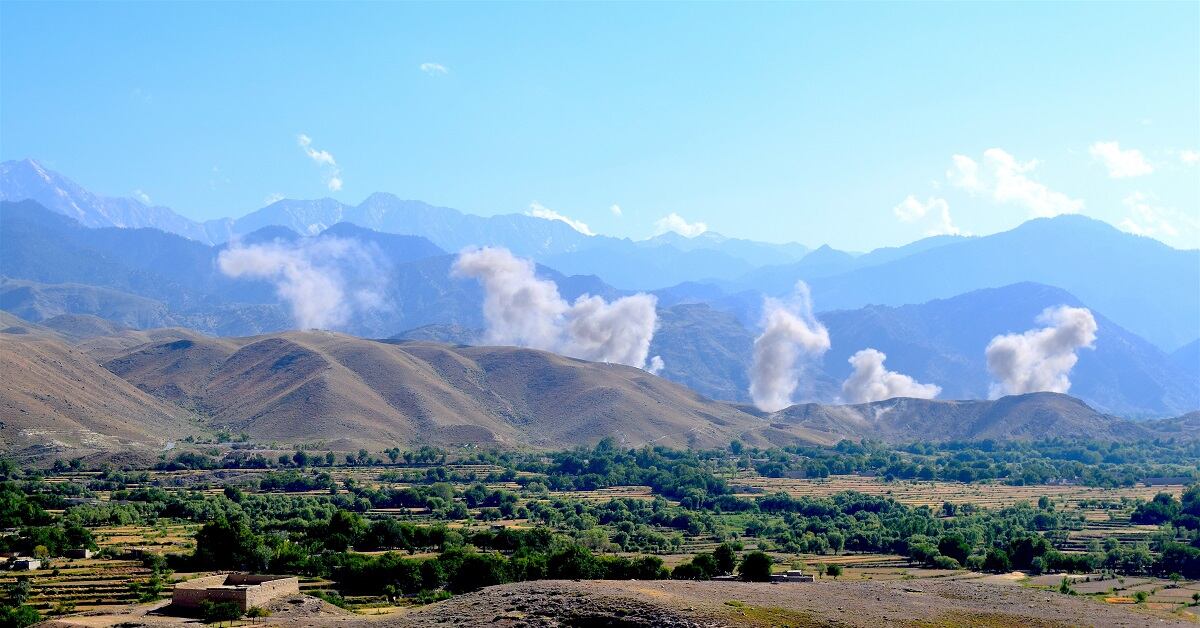U.S. airstrikes against the Islamic State militant group and the Taliban in Afghanistan continue to grow as the 17-year-old war in the country pushes into the summer fighting season once more.
Numbers released by U.S. Air Forces Central Command show that while Afghanistan airstrikes trend upward in Afghanistan, they are simultaneously decreasing in Iraq and Syria as the war against ISIS' main cohort there reportedly winds down.
So far this year, U.S. aircraft, including drones, have released 2,911 munitions in support of Operation Freedom’s Sentinel — the American-led offensive against insurgent forces in Afghanistan.
The number of weapons dropped in the country already surpasses the totals from all years AFCENT has tracked, back to 2013, with the exception of 2017. Given that each month this year the number of weapons dropped is greater than each corresponding month in 2017, though, the total munitions dropped this year is on track to surpass even that year’s previous high.
RELATED

“Until the Taliban show they’re willing to reconcile with the Afghan government, they will remain square in our crosshairs," said Lt. Gen. Jeffrey Harrigian, Combined Forces Air Component commander for U.S. Central Command, in the AFCENT numbers roll-up.
In Iraq and Syria, airstrikes have fallen sharply, reaching just 2,862 weapons released by June. Around this time last year, U.S. and coalition aircraft had dropped more than 23,000 weapons, according to AFCENT.
The numbers, which AFCENT releases monthly, document an increase in the Pentagon’s efforts to push the Taliban to the negotiating table by putting pressure on them through kinetic activity. Meanwhile, the numbers also indicate a waning war in the areas of Iraq and Syria, which preoccupied U.S. strategy for the past few years while Afghanistan had taken a back seat.

The increased airstrikes in Afghanistan coincide with a 10-fold increase in airdrops in the country. More than 327,000 pounds of supplies were airdropped into Afghanistan by the end of May this year, compared to 33,000 pounds of supplies throughout all of 2017.
“Airdrops have increased in Afghanistan in recent months as Afghan and U.S. ground forces intensified their operations against the Taliban in order to pressure the Taliban into reconciling with the Afghan government,” Capt. Mark Graff, an Air Forces Central Command spokesman, previously told Military Times.
The increase in airstrikes includes all U.S. military and coalition aircraft, but not all aircraft flying in the areas of operation fall under this designation. For instance, Afghan air force pilots have stepped up capabilities in recent months, even dropping laser-guided bombs, but those numbers are calculated by separate authorities.
The Afghan air force’s tactical air coordinator career field, similar to American and NATO joint terminal attack controllers, has been making significant strides as well, enhancing the ability of Afghan aircraft in close-air support scenarios with friendly ground forces. Afghan tactical air coordinators cannot control U.S. aircraft, however.
The Afghan air force also made progress by twice airdropping supplies, a crucial capability if the Afghans are to prevent besieged outposts from falling to insurgent forces in the future.
“On June 1, C-208 air crews needed only six hours from mission tasking to execution to conduct their first emergency combat airdrop mission bringing ammunition to Afghan National Police and citizens fighting the Taliban in Badakshan Province,” an AFCENT press release reads. “Then on June 18, C-208 air crews delivered 900 pounds of supplies via airdrop to Afghan commandos fighting in Faryab Province.”
Kyle Rempfer was an editor and reporter who has covered combat operations, criminal cases, foreign military assistance and training accidents. Before entering journalism, Kyle served in U.S. Air Force Special Tactics and deployed in 2014 to Paktika Province, Afghanistan, and Baghdad, Iraq.










